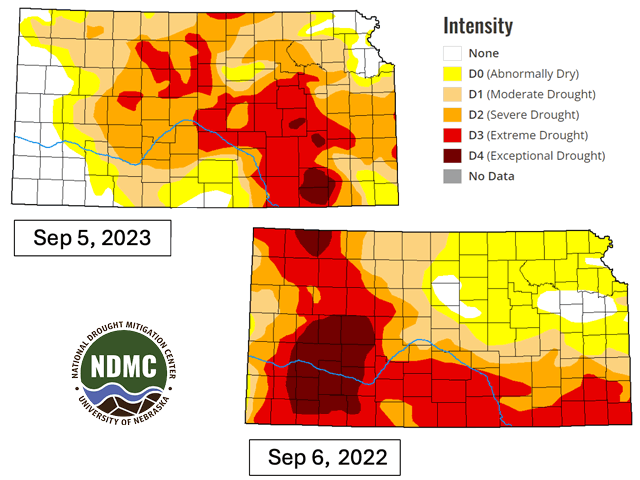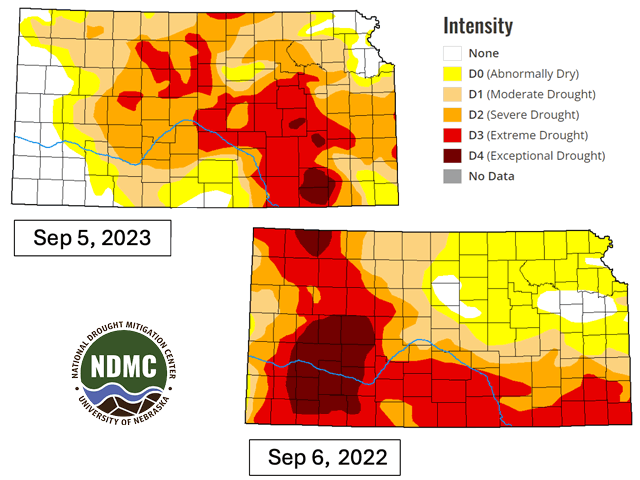Ag Weather Forum
Variable Moisture for New Winter Wheat Seeding
Winter wheat seeding is just getting started. The Sept. 5 USDA crop progress report showed just one percent of wheat seeding done compared with the five-year average of three percent. Averages point to about one-third of the crop seeded by the end of the month.
Soil moisture for that new wheat is widely variable. We have seen big improvement in some areas while heat and dryness during late summer have pulled out moisture elsewhere. Overall, USDA's Ag in Drought report for Sept. 5 places about 46% of U.S. winter wheat production affected by drought -- close to half the U.S. output. On a national level, that is an improvement over a year ago, when 53% of U.S. winter wheat production was affected by drought as of early September.
Top winter wheat production state Kansas offers an example of how variable conditions are for this year's seeding. The state Drought Monitor shows western and southwestern Kansas have mainly no drought in effect for early September 2023 compared with a year ago, when the entire sector had either extreme or exceptional drought in place. The year 2023 has seen total precipitation of more than 20 inches across western Kansas, as much as five times the total for the year at this point in 2022. In contrast, central Kansas has had no more than 18 inches precipitation for the year, from five to seven inches below a year ago, and has extreme drought in place in the Drought Monitor assessment. The Drought Monitor summary report for Sept. 5 highlighted " ... significant (drought) worsening most notable in central and eastern Kansas."
Kansas primarily raises hard red winter (HRW) wheat. In other HRW wheat growing states, Oklahoma and Texas winter wheat areas have a similar pattern to Kansas regarding drought impact. Elsewhere in the Plains, Colorado, Nebraska and South Dakota wheat areas are largely drought-free. Montana HRW areas are mixed, with drought in the state's primary wheat production area of northern Montana.
In other winter wheat regions, Midwest wheat areas of the Great Lakes and Ohio Valley are mainly drought-free. Northwestern U.S. wheat areas match the Plains in having variable drought conditions for seeding. Eastern Washington, northeastern Oregon and western Idaho are in drought while southern Idaho is drought-free as seeding gets going.
Forecasts through mid-September indicate moderate-to-heavy precipitation in the Southern Plains, light-to-moderate totals in the Midwest, and little to none over the Northwest. The variability in soil moisture for winter wheat going into the ground to start its months-long cycle is likely to show a wider difference in subsequent drought assessments as seeding continues during this fall.
Bryce Anderson can be reached at Bryce.Anderson@dtn.com
(c) Copyright 2023 DTN, LLC. All rights reserved.
P[L1] D[0x0] M[300x250] OOP[F] ADUNIT[] T[]






Comments
To comment, please Log In or Join our Community .